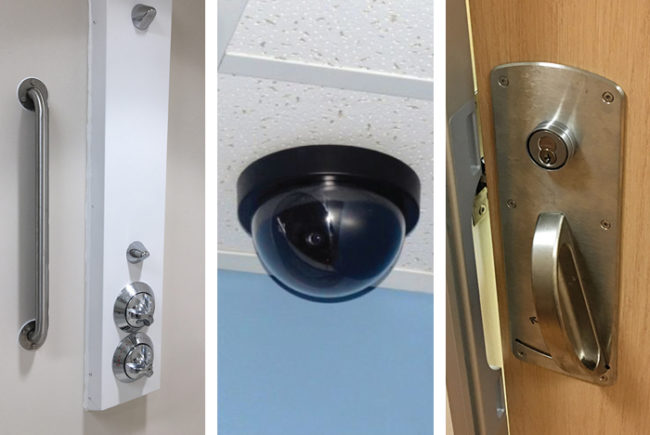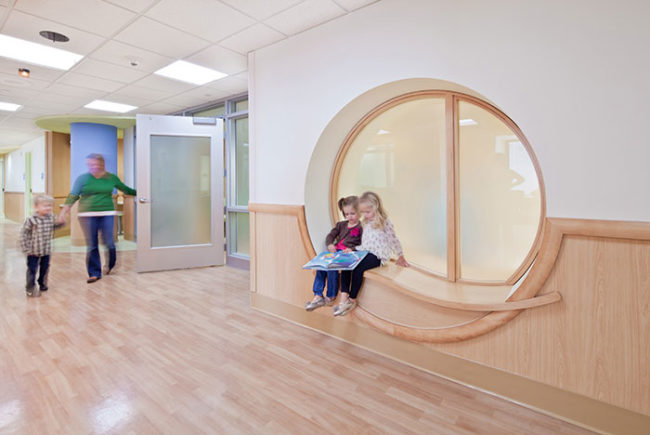 James M. Hunt, AIA, NCARB, principal of Behavioral Healthcare Architectural Group and co-author of the "Design Guide for the Built Environment of Behavioral Health Facilities," discusses the growth of these facilities, common behavioral design mistakes and the migration of the "Design Guide" to the Facility Guidelines Institute.
James M. Hunt, AIA, NCARB, principal of Behavioral Healthcare Architectural Group and co-author of the "Design Guide for the Built Environment of Behavioral Health Facilities," discusses the growth of these facilities, common behavioral design mistakes and the migration of the "Design Guide" to the Facility Guidelines Institute.
What initially prompted you and your co-author, David M. Sine, ARM, CSP, CPHRM, to write the "Design Guide for the Built Environment of Behavioral Health Facilities" in 2003?
There seemed to be a lack of understanding about why behavioral health facilities needed to be designed differently and to use different products such as door hardware and toilet accessories. Our goal was to help design professionals and behavioral health facilities understand the how, why and what of these differences and provide centralized information regarding where the specialized products could be obtained. This was at a time before widespread use of social media, blogs, websites and similar communication methods that we take for granted today.
You are currently on your seventh edition. What has determined when it’s time for a new edition?
While the current edition is titled 7.0, there have been a total of 16 updates in all, including decimal point updates of some editions. In recent years, we have tried to post one or two updates per year. The timing is dependent on our having a substantial list of new products we want to include and having the time available to make the revisions. Every time we post a new update, we have a file of new products in development, but not yet commercially available, that we want to include in the next version.
Why has interest in behavioral health care design grown so quickly?
Ten or 15 years ago, some of the larger manufacturers did not see this market as being large enough to invest in the necessary research and development to bring specialized products to market. Smaller companies developed an interest and began producing some of the needed items. Over the years, the availability and sales volumes of the specialized products made it apparent that these were filling a need and were marketable. We have progressed from having to solicit companies to create these items to having companies from all over asking us what is needed that is not now available.
The Affordable Care Act, parity and capitation have brought about significant changes in reimbursement models for many institutions and they are realizing the need to provide behavioral health services for the people covered by their plans. Also, the prospect of not being reimbursed for some repeat admissions has rendered the previous revolving-door approach financially burdensome.
What are some of the most common mistakes you see in behavioral design for the health care environment?
In many ways, the needs of behavioral health care units and medical-surgical units are completely opposite. Converting a med-surg unit for safe use as a behavioral health unit can be difficult. This is not always well-understood by the facility staff or the design team. Some owners undertaking new construction projects do not understand that the typical parameters for a med-surg building, such as cost per sq. ft. and linear feet of exterior wall per sq. ft. of building, do not apply to behavioral health units that will function well.
One of the most basic issues is the staff’s ability to observe patient activities and the doors to their rooms from the nurses’ station. Blind corners and alcoves provide hiding places and opportunities for staff to become isolated with patients and possibly assaulted. The possibility of patients’ barricading doors to delay staff access, glass and other objects that can be broken to create weapons and ligature attachment points are other potential hazards.
Is the "Design Guide" sometimes misperceived as a code document rather than a best-practices document?
The Hunt File |
CV• President of Behavioral Health Facility Consulting LLC, an organization located in Topeka, Kan., that has consulted with behavioral health facilities and architects in 30 states and Canada • Practicing architect and facility management professional with more than 37 years of experience in behavioral health care design and operation • Director of facilities management for the Menninger Clinic, a leading inpatient psychiatric hospital, for 20 years Accomplishments• Co-author of the “Design Guide for the Built Environment of Behavioral Health Facilities,” published electronically by the Facility Guidelines Institute • Winner, along with “Design Guide for the Built Environment of Behavioral Healthcare Facilities” co-author David Sine, ARM, CSP, CPHRM, of the National Association of Psychiatric Health Systems’ 2013 Quality Leadership Award • Founding member and past president of the International Facility Management Association Health Care Council • Frequent speaker and author on behavioral health design and engineering topics Education• Bachelor of architecture, Kansas State University, Manhattan |
The "Design Guide" does not constitute a set of requirements or standards. It is not a code that must be followed. It is an attempt to inform interested parties of design philosophies, techniques and specific products that may be utilized to create safe environments that are also more comforting, welcoming and less-threatening than some that are currently in use and being designed. Its stated target is inpatient adult behavioral health facilities and includes a range of concepts and products that may be applied, depending on many variables, including patient population, acuity, diagnoses, voluntary or involuntary admissions and others. Some concepts and products may not be appropriate for some facilities. There is no one-size-fits-all design solution for these units.
The "Design Guide" is also not intended to be a complete listing of all products commercially available. It illustrates different types of items and gives exposure to companies that provide them. It is beyond the scope of a document that is available as a free download to provide the definitive list of all available products. To keep it somewhat manageable, we have arbitrarily limited it to around 100 pages. This means that as new products become available, others that have been included for some time may be removed to create space for the newer items.
Earlier this year, the "Design Guide for the Built Environment of Behavioral Health Facilities" moved from the website of the National Association of Psychiatric Health Systems (NAPHS) to the Facility Guidelines Institute (FGI), which will publish it in the future. What was behind that move?
We greatly appreciate that NAPHS hosted the "Design Guide" for the last 12 years. Its concern and dedication to disseminating this information has been well-received by the industry and has been instrumental in improving the quality of the built environment for these patients and staff.
FGI is developing a new “Beyond Fundamentals” series of documents and the "Design Guide" fits into this category. The FGI Guidelines state the “fundamental” or minimum requirements for various types of health care facilities. The “Beyond Fundamentals” portion of the FGI website contains reference documents on many topics that discuss more best practice-type issues and are available for download at no cost.
This new category provides the opportunity to colocate the "Design Guide" with other white papers on various other health care design and construction topics in a single place where interested individuals can find a broad range of information. This new opportunity provides an environment to continue to develop the "Design Guide" and allow it to achieve even more in the future.
How would you like the "Design Guide" to develop in the years to come?
That discussion is just beginning. No one knows at this point exactly what changes and developments may occur. There are a lot of ideas being discussed and options being explored. We are open to suggestions. Ideas and comments may be submitted to either FGI at info@fgiguidelines.org or directly to the authors at info@bhfcllc.com. Health facilities professionals should let us know what they are thinking and what they would like to see in future editions of the "Design Guide."
Mike Hrickiewicz is editor of Health Facilities Management.





